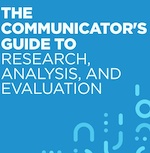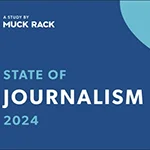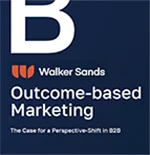 |
The role of research, analysis and evaluation in communications is rapidly growing, and a new report from the Institute for Public Relations explains how PR pros can keep up with the industry’s information revolution.
“The Communicator’s Guide to Research, Analysis, and Evaluation” takes readers through a “five-stop cyclical process” that covers everything from gathering initial data to using research-based evaluation to gauge the success of a project once it has been completed.
The core components that the guide outlines are: analyzing the business environment, setting objectives, developing strategy, tactical creation and activation, and evaluation and continuous improvement.
For each of those steps, the guide shows the impact that a process based on research, analysis and evaluation can have.
The importance of starting out with an open mind is stressed. “Professionals should begin with a clean slate,” the guide says. “A clean-slate atmosphere provides a fresh start for reexamining the priorities of the organization, how they affect public relations, and what public relations can do to advance those priorities.”
It’s once communicators start writing on their “clean slate” that the role of data and research begin to play a big part. Beginning with a “landscape analysis” will provide PR pros with such tools as a knowledge of the competitive environment, the ability to gauge the impact of regulatory activity and a firm grasp on the preferences and priorities of customers and other stakeholders.
When setting objectives, the guide says, it is important to make sure they are meaningful, reasonable and measurable. “Measurable objectives ensure that communication performance can be easily quantified.”
During the strategy development process, stakeholder segmentation, media prioritization and message engineering—all based on collected research—come into play.
The guide also discusses the role that data and research play in creating and activating the strategy that is developed, as well as in measuring a project’s success and providing tips as to how future projects can be made more effective.
It also provides case studies, detailed timetables and a list of commtech tools for enterprise research, analysis and evaluation.
“A constant feedback loop of data and insight allows the creation of communications programs, campaigns, and initiatives that reach and resonated with stakeholder,” the guide concludes.
To read the entire guide, click here.


 Consumers who once demanded convenience now require consistent, multi-channel experiences that cater to them at every point. Brands must have a clear, audience-appropriate, and channel-specific voice across all platforms.
Consumers who once demanded convenience now require consistent, multi-channel experiences that cater to them at every point. Brands must have a clear, audience-appropriate, and channel-specific voice across all platforms. Employees at U.S. companies are experiencing high levels of burnout, but managers are lagging behind when it comes to their awareness of the problem
Employees at U.S. companies are experiencing high levels of burnout, but managers are lagging behind when it comes to their awareness of the problem Brand has a powerful effect on a company’s valuation, but the level of brand understanding in the investment community leaves a lot to be desired, according to a new study from Brodeur Partners, Interbrand and NewtonX.
Brand has a powerful effect on a company’s valuation, but the level of brand understanding in the investment community leaves a lot to be desired, according to a new study from Brodeur Partners, Interbrand and NewtonX. AI may still be viewed with a wary eye by most media pros, but its use is growing, according to a new study from Muck Rack.
AI may still be viewed with a wary eye by most media pros, but its use is growing, according to a new study from Muck Rack. A new study from Walker Sands says that some marketers have been putting the cart before the horse when it comes to the relationship between marketing channels and business outcomes.
A new study from Walker Sands says that some marketers have been putting the cart before the horse when it comes to the relationship between marketing channels and business outcomes.


 Have a comment? Send it to
Have a comment? Send it to 
No comments have been submitted for this story yet.